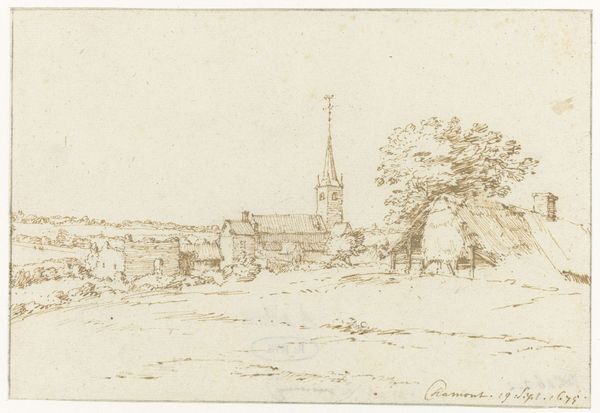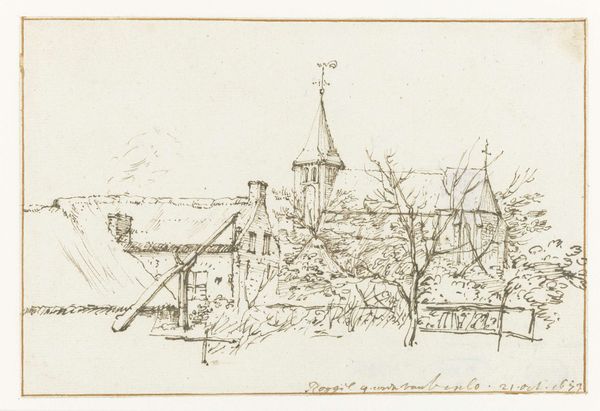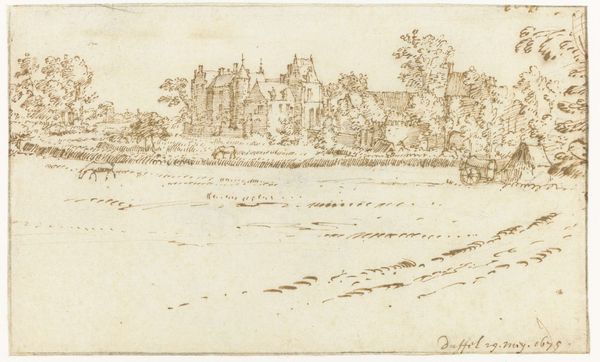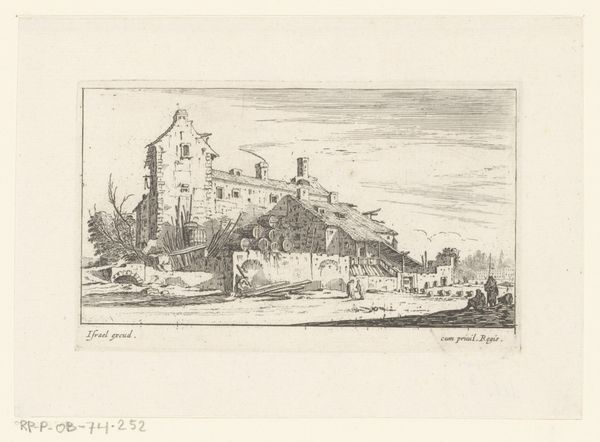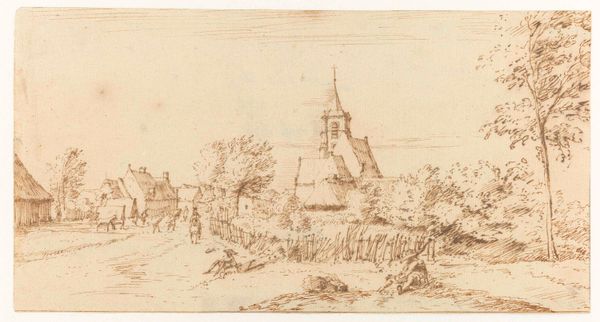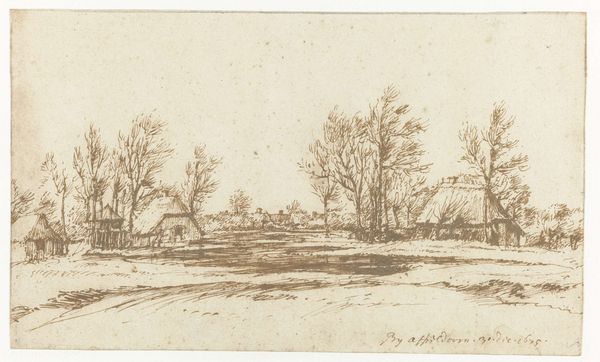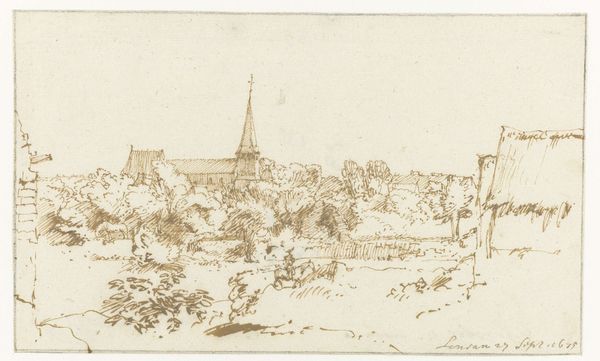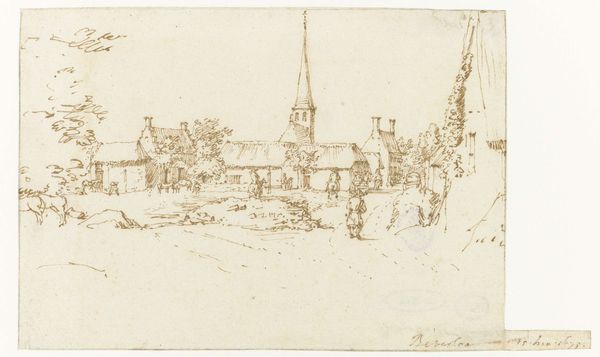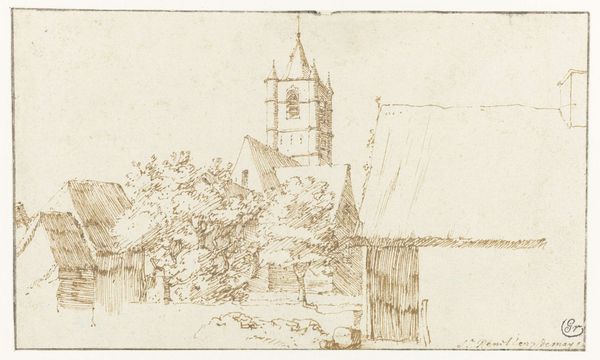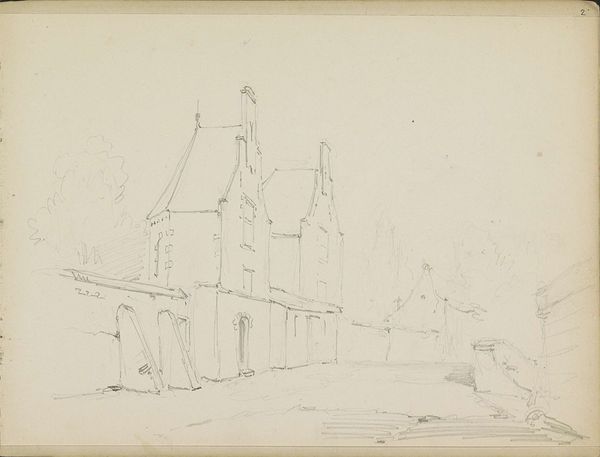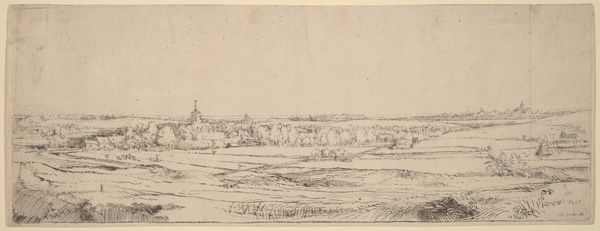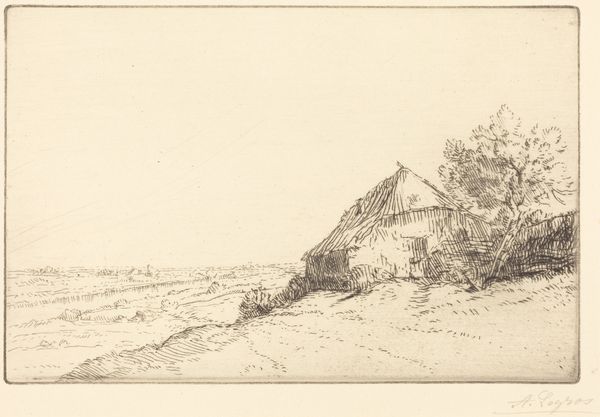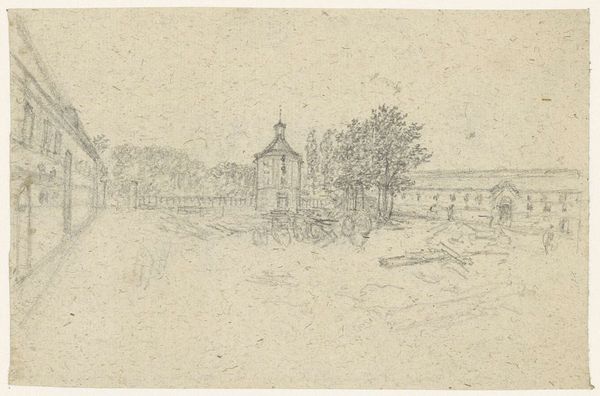
drawing, ink
#
drawing
#
baroque
#
dutch-golden-age
#
landscape
#
etching
#
ink
Dimensions: height 110 mm, width 187 mm
Copyright: Rijks Museum: Open Domain
Editor: Here we have "Huis te Middachten," a drawing, potentially an etching as well, by Constantijn Huygens II, dating back to possibly 1676. It feels like quite a simple landscape, very understated in its presentation of what appears to be a stately home. How do you interpret this work, considering its place in the 17th century? Curator: This image gives us a window into the Dutch Golden Age, but it's a very particular window. The etching’s seeming simplicity actually points to important shifts in how landscapes, and especially estates, were being depicted. Think about the role country estates played, not just as residences, but as symbols of power, wealth, and social standing. Huygens wasn't just recording the house; he was participating in constructing an image of it. Editor: So, it’s less about faithful representation and more about projecting a certain ideal? Curator: Precisely. This drawing serves as a form of visual rhetoric. What is omitted is as crucial as what is shown. Look at the angle – not imposing or dramatic, but domestic, calm, ordered. This would appeal to a specific kind of patron invested in maintaining a specific status. How might the socio-political climate of the Dutch Republic in that period, marked by its mercantile power and nascent colonialism, influence the creation and reception of such an image? Editor: So, viewing it as more than just a landscape reframes it in quite an interesting light; the context becomes crucial. It reflects ideas about class, power, and the self-image the Dutch were keen to project. Curator: Exactly. Understanding that helps us see beyond just lines on paper; we see the political landscape, quite literally. Editor: That’s a fantastic perspective; I'll definitely carry that into future viewings of similar artworks.
Comments
No comments
Be the first to comment and join the conversation on the ultimate creative platform.
